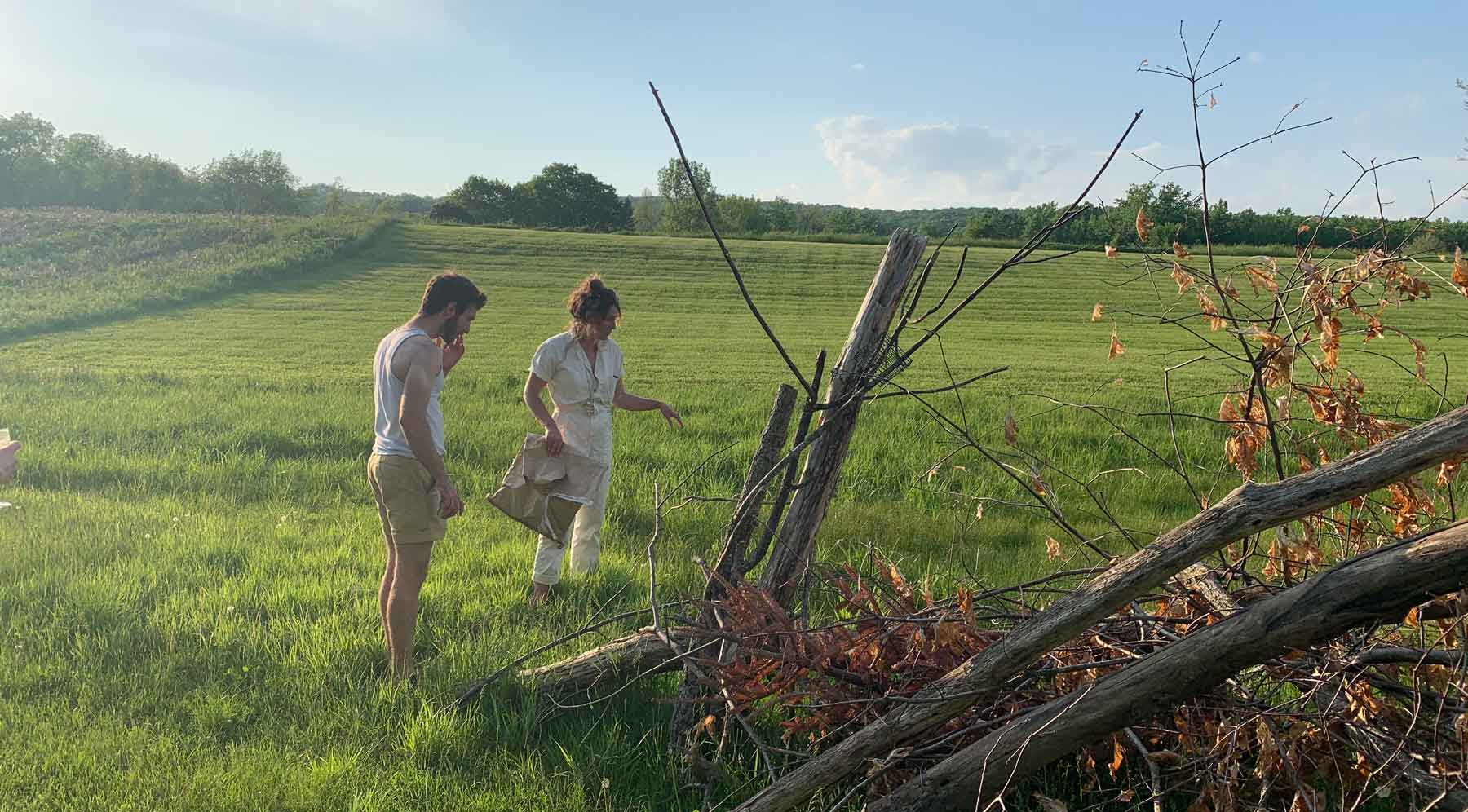
The Marshy Garden
The Marshy Garden project is a living, restorative and scalable artform. Through cooperative design vision and native plant installation, what was once a monoculture turf lawn and debris dumping ground, is now transforming into an ecological oasis and experimental site for local restoration. The project’s principal objective is to increase flora & fauna biodiversity through the growing, planting, and caring of native plants. This increase in plantings enable the attraction of both generalist and host-specific insect, bird, and mammal species, providing them with edible sustenance and ability to find shelter and nesting sites.
We have also witnessed through this endeavor that this work has valuable educational value. Through community events we help to inspire other people in regenerating their own land and spaces by demonstrating the process of how to plant and support native species, construct brush piles, and reduce their need for mechanized equipment for maintenance.
At the work’s core is the heart of alternative landbased practice, a down-to-Earth design approach which prioritizes positive impact on ecosystems and peoples’ well being.
This approach is derived from the unique backgrounds of the two core collaborators of the project: Ash Ferlito as an artist and skilled bird + moth ecologist and Brandon Hoak as a trained designer, researcher, and ecological gardener. They view the project through a lens of sculpture – architecture for animals – developing texture, topography, and interest through diverse plantings and habitat. “By viewing ourselves as a meaningful extension of our environment, knowing the vitality we can bring to it, we continue to work diligently, growing thousands of native plants from seed, planting them by hand, and tending to them as kin”.
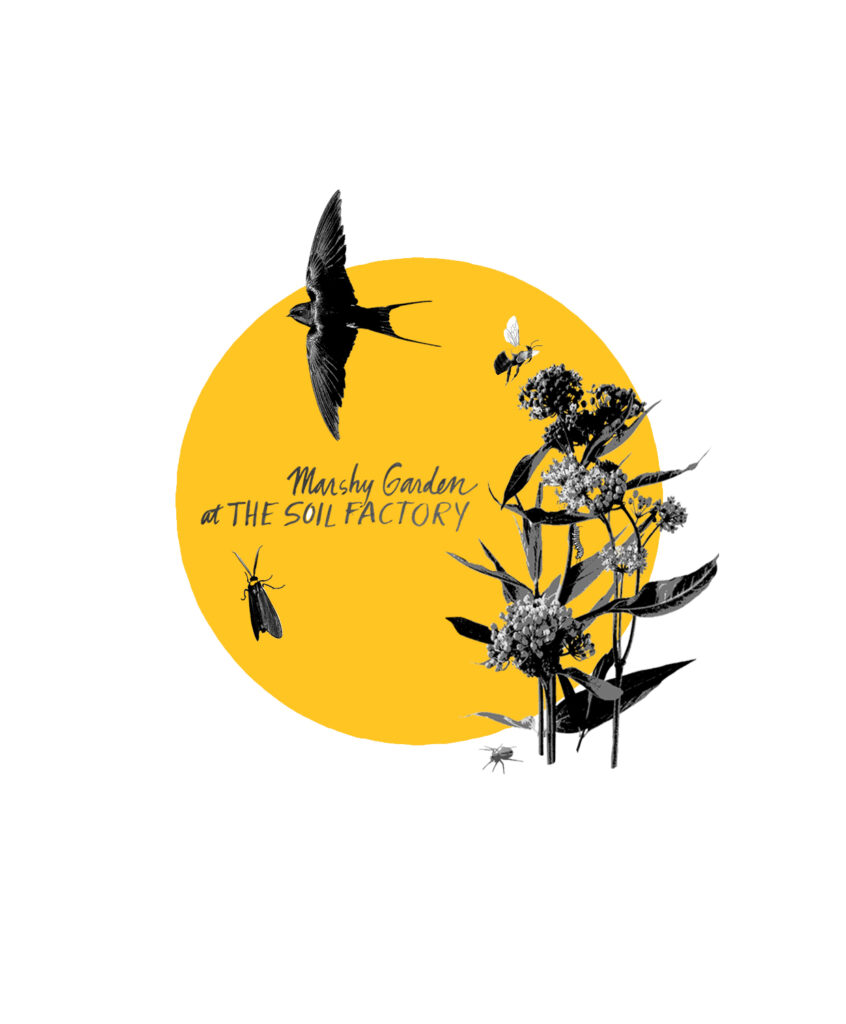
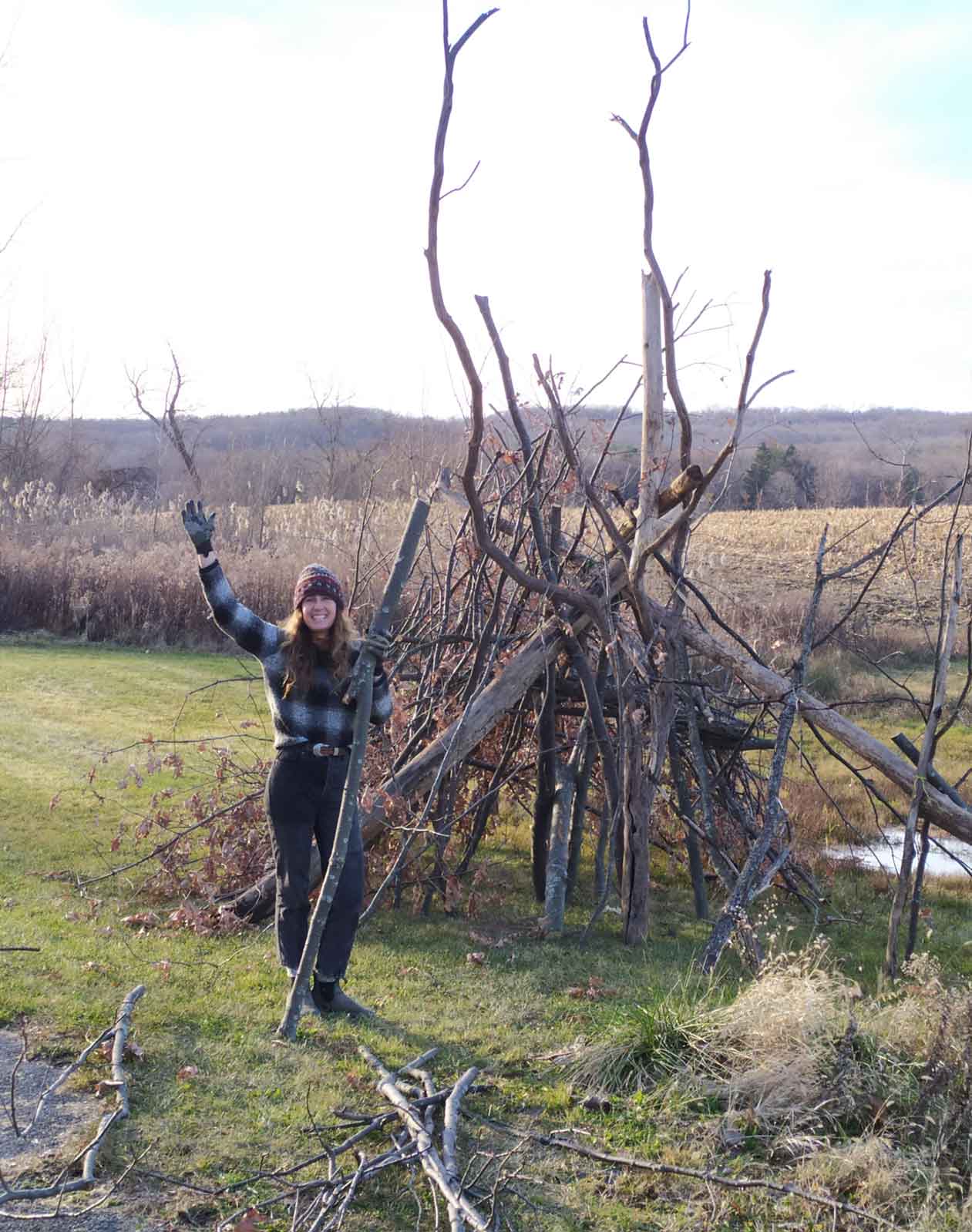
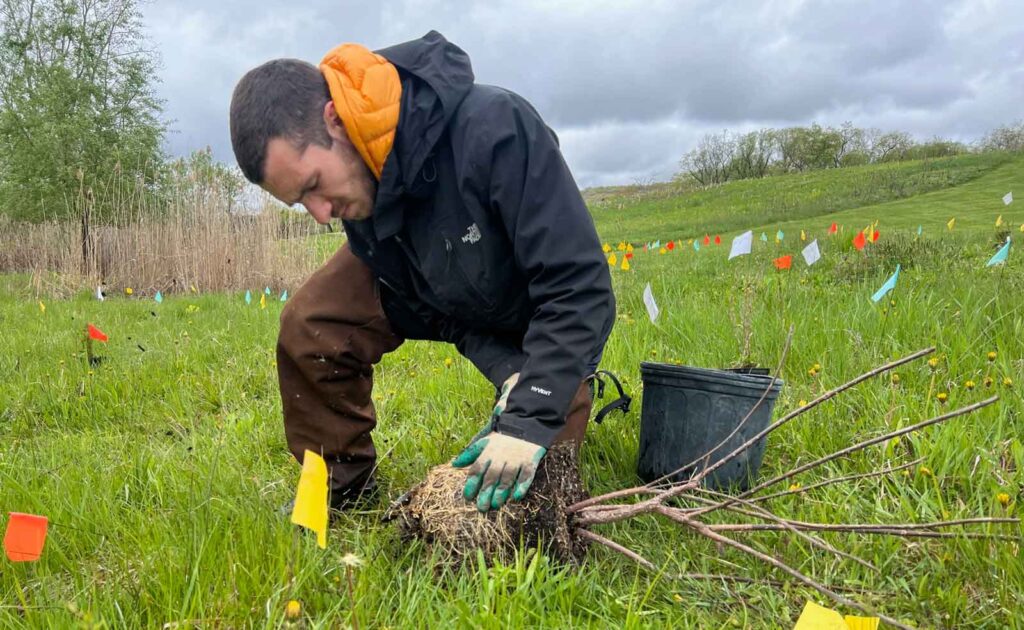
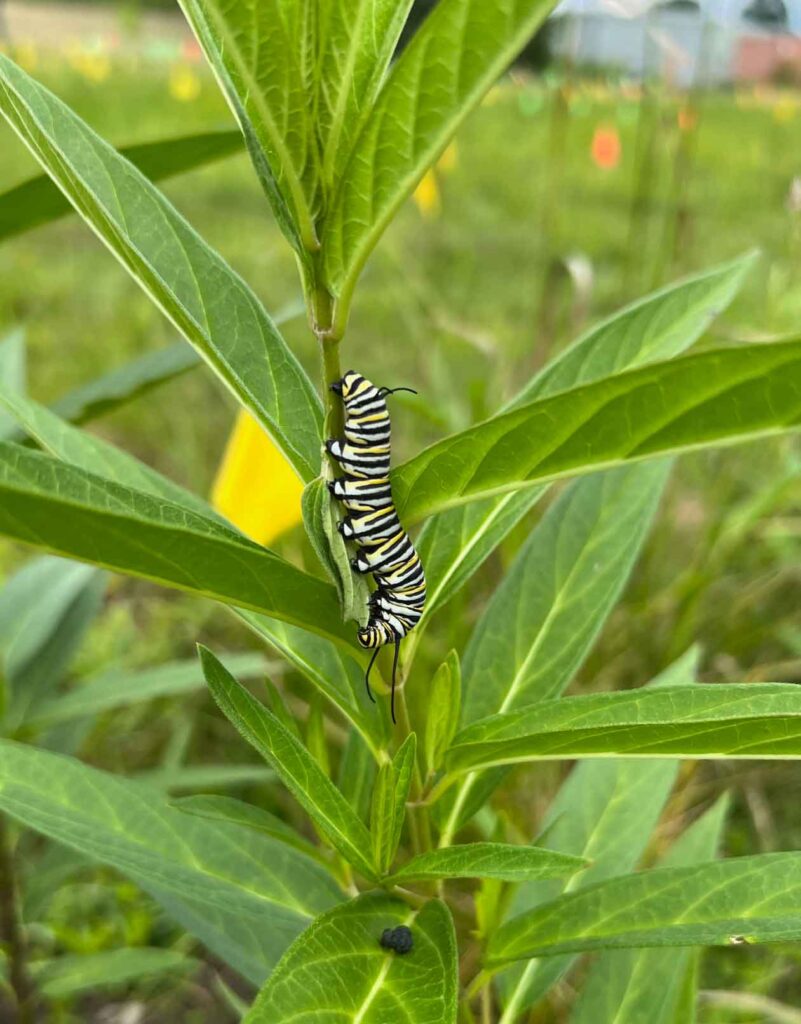
YEAR 2
Life in the Marshy Garden this year was abundant. There were many noteworthy sightings, developments, visits, and additions– all in step with the overall goal of creating value for wildlife and people and having fun while we do it. A pair of Green Frogs moved in, Eastern Kingbirds were spotted gathering nesting materials, Ruby-throated Hummingbirds visited the Trumpet Coral Honeysuckle (Lonicera sempervirens), and throughout the season, the place was buzzing with many insects accessing all the pollinator-supporting plants that now live in the garden. The growth of the Wild Bergamot (Monarda fistulosa), Virginia Mountain Mint (Pycnanthemum virginianum), and Virginia Wild Rye (Elymus virginicus) planted last year was spectacular. There was a volunteer Blue Lobelia (Lobelia siphilica) and a late summer Aster explosion; the Common Boneset (Eupatorium perfoliatum), Blue Vervain (Verbena hastata), and Elderberry (Sambucus canadensis) grew shoulder-high. A garden favorite, it was wonderful to see the Swamp Milkweed (Asclepias incarnata) take hold in the central zone, attract Monarch Butterflies, and produce many pods popping full of seeds.
With support from The Soil Factory Artist in Residency program and a Neighborhood Mini-grant from Sustainable Tompkins we were able to supplement our plants grown from seed from the Finger Lakes Native Plant Society seed bank with great additions from two local nurseries, Grow Wild and The Plantsmen, contributing major variety with more established shrubs and herbaceous perennials. We also used funds to create informative and welcoming signage.

As we continue, our familiarity with different aspects of the site deepens, and we have started a second-wave planting plan. Brandon established a ‘rock garden’ in one of the drier corners of the garden, experimenting with a truly fabulous array of drought-tolerant plants such as: Eastern Prickly Pear (Opuntia humifusa), Blue Sage (Salvia farinacea), and Sweet William (Phlox maculata).
We envision the garden as a resource for both people and animals, and we were delighted to have many visitors this year. To celebrate the annual Pollinator Week, the Tompkins Pollinator Pathway organized a special event at the Marshy Garden, sharing the garden project and The Soil Factory with a new audience. We were one of four gardens featured on the Town of Ithaca Conservation Board Sustainable Garden Tour, where we provided an example of experimental gardening to the roster. We provided tours as part of the Environmental Management Council NYSACC Conference and welcomed the Town of Ithaca Planning Board for a late summer tour. Several Soil Factory artists-in-residence spent time in the garden, especially Max Fertik and Adam Shulman, who incorporated materials into their sculptural works. As part of the Cornell Environment and Sustainability Colloquium, we hosted an on-site planting workshop, and gave an artist talk on the project within the context of our other works. We had help with planting and maintenance from friends and volunteers MacLain Naumann, Matthew Fenn, Max Fertik, and Adam Shulman, who brought great energy to the site. Most recently, we had a delightful time at our End of Season (Spooky) Celebration, taking a moment to appreciate the fantastic growth, sightings, and work in the garden this year.

